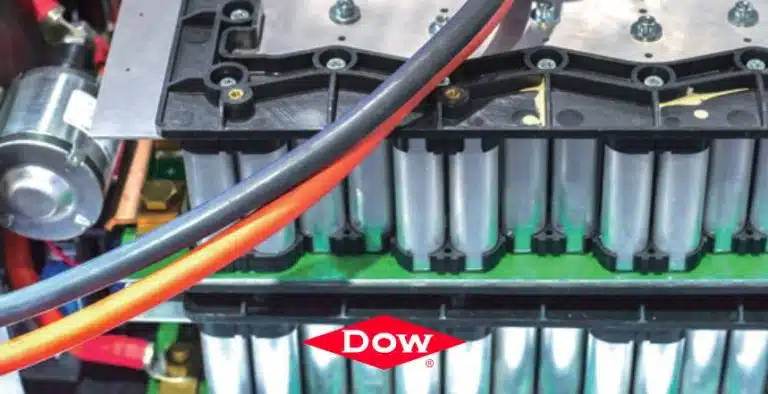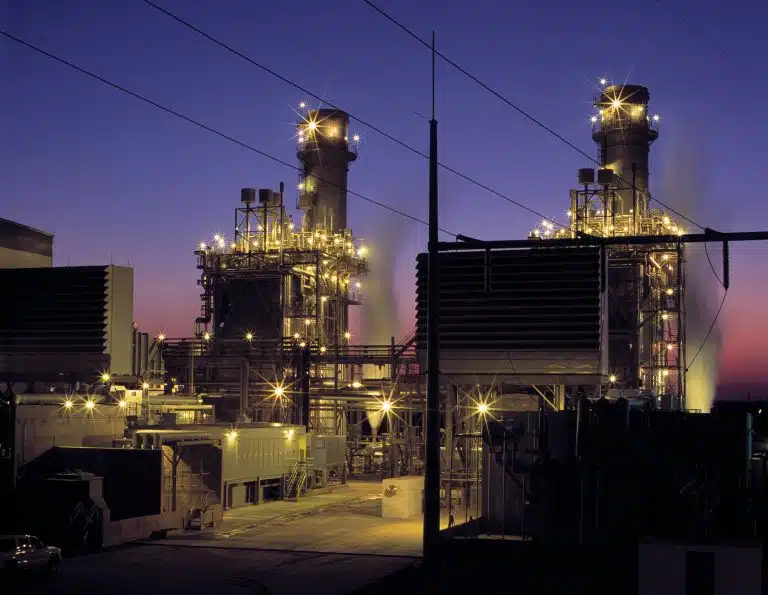Modeling of Battery Module Assembly Materials For Design and Safety Considerations
In this post you are going to learn everything related to Dowsil’s Battery Module Assembly Materials. Read the information below.
Battery Thermal Management Gap Fillers
- Battery modules require soft compressible thermally conductive materials to dissipate heat and relieve mechanical stress
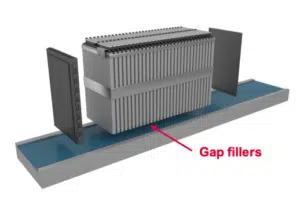
- Typical requirements:
- Thermally conductive: 1-5W/m·K
- Vibration dampening: material has to remain flexible
- Non-flammable
- Non-flowable but filling complex geometries when compressed (spreading behavior)
- Low volatiles <100-300ppm
- (Generally) electrically insulative
- (Generally) removable adhesion for repairing/recycling
Thermal Stress Modeling Example
- Objective: Understand the impact of thermal conductivity of thermally conductive gap fillers on the thermal and stress fields in a battery module during normal battery operations
- Approach: Sequentially coupled thermal-stress analysis of a representative model

Thermal Model Example
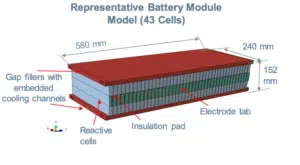
- Steady-state heat transfer initial temperature: 24 ºC.
- Thermal loads volumetric heat generation rate: 9,560.5 W/m³
- Boundary conditions:
- Forced liquid cooling channel: coefficient 30W/m²K
- Exposed surfaces: convective heat transfer coefficient of 4 W/m²K
- Film temperature: 24°C
Stress Model Example
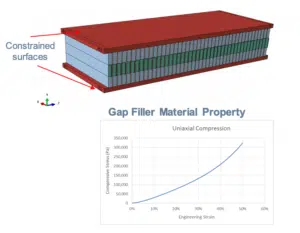
- Loads: non-uniform temperature field from the thermal model analysis
- Boundary conditions: top surface of the top gap filler panel and bottom surface of the bottom gap filler panel were constrained
- Gap filler material model: hyperelastic
Gap Filler Thermal Conductivity Affects Temperature Distribution

Higher Thermal Conductivity, Lower T??? AND ∆T
The thermal model suggests using gap fillers with higher thermal conductivity can:
- Reduce peak temperature – lower thermal runaway risk
- Keep battery operating in optimal working temperature range
- Increase battery performance (e.g. charge/discharge rate, driving range)
- Significantly improve temperature uniformity

Lower ∆T, Lower Thermal Expansion
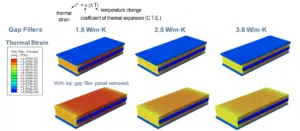
Thermal Strain Leads To Mechanical Strain/Stress in Battery
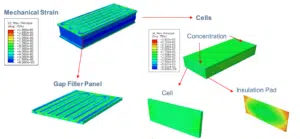
Strain Relief in Insulation Pad
More uniform temperature, lower strain and stress, higher reliability
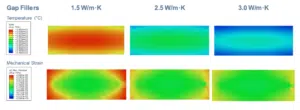
Stress Reduction on Battery Cell

Summary of Stress Analysis
Model suggests that using gap fillers with higher thermal conductivity can:
- Lower stress amplitude and concentration
- Minimize premature material failure
- Improve safety and reliability

Conclusions
- A thermal-stress model was developed to gain insight into the thermal and stress fields during normal battery operations
- The model suggests multiple benefits of gap fillers with higher thermal conductivity
- Integrated modeling enables
- Materials selection and development based on customer requirements
- Optimization of system performance and manufacturing process
- Reduction of product development cycles
- Future Work
- Enhance model to account for interfacial thermal resistance
- Model customer-specific design configurations
Portfolio Of Advanced Thermally Conductive Materials



